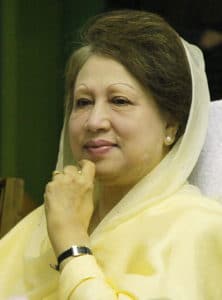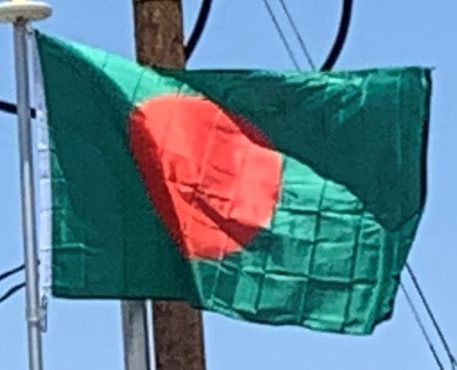After a year in office, Sattar was overthrown in the 1982 Bangladesh coup d’état. Chief Justice A. F. M. Ahsanuddin Chowdhury was installed as president, but army chief Hussain Muhammad Ershad became the country’s de facto leader and assumed the presidency in 1983. Ershad lifted martial law in 1986. He governed with four successive prime ministers (Ataur Rahman Khan, Mizanur Rahman Chowdhury, Moudud Ahmed and Kazi Zafar Ahmed) and a parliament dominated by his Jatiyo Party. General elections were held in 1986 and 1988, although the latter was boycotted by the opposition BNP and Awami League. Ershad pursued administrative decentralization, dividing the country into 64 districts, and pushed Parliament to make Islam the state religion in 1988. A 1990 mass uprising forced him to resign, and Chief Justice Shahabuddin Ahmed led the country’s first caretaker government as part of the transition to parliamentary rule.
Current parliamentary era (1991–Present):
After the 1991 general election, the twelfth amendment to the constitution restored the parliamentary republic and Begum Khaleda Zia became Bangladesh’s first female prime minister. Zia, a former first lady, led a BNP government from 1990 to 1996. In 1991 her finance minister, Saifur Rahman, began a major program to liberalize the Bangladeshi economy.

In February 1996, a general election was held which was boycotted by all opposition parties giving a 300 (of 300) seat victory for BNP. This election was deemed illegitimate, so a system of a caretaker government was introduced to oversee the transfer of power and a new election was held in June 1996, overseen by Justice Muhammad Habibur Rahman, the first Chief Adviser of Bangladesh. The Awami League won the seventh general election, marking its leader Sheikh Hasina’s first term as Prime Minister. Hasina’s first term was highlighted by the Chittagong Hill Tracts Peace Accord and a Ganges water-sharing treaty with India. The second caretaker government, led by Chief Adviser Justice Latifur Rahman, oversaw the 2001 Bangladeshi general election which returned Begum Zia and the BNP to power.
The second Zia administration saw improved economic growth, but political turmoil gripped the country between 2004 and 2006. A radical Islamist militant group, the JMB, carried out a series of terror attacks. The evidence of staging these attacks by these extremist groups have been found in the investigation, and hundreds of suspected members were detained in numerous security operations in 2006, including the two chiefs of the JMB, Shaykh Abdur Rahman and Bangla Bhai, who were executed with other top leaders in March 2007, bringing the militant group to an end.
In 2006, at the end of the term of the BNP administration, there was widespread political unrest related to the handover of power to a caretaker government. As such, the Bangladeshi military urged President Iajuddin Ahmed to impose a state of emergency and a caretaker government, led by technocrat Fakhruddin Ahmed, was installed. Emergency rule lasted for two years, during which time investigations into members of both Awami League and BNP were conducted, including their leaders Sheikh Hasina and Khaleda Zia. In 2008 the ninth general election saw a return to power for Sheikh Hasina and the Awami League led Grand Alliance in a landslide victory. In 2010, the Supreme Court ruled martial law illegal and affirmed secular principles in the constitution. The following year, the Awami League abolished the caretaker-government system.
